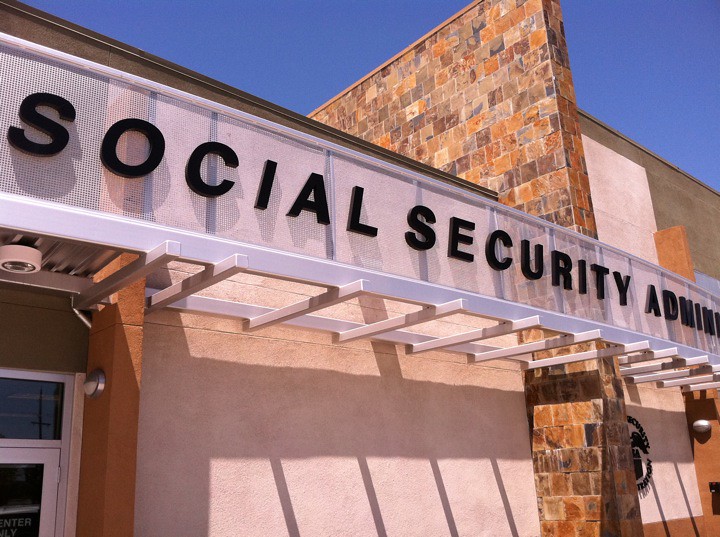Hey there, fellow late-bloomer! So you’ve just realized that while your buddies have been socking away cash since college, your retirement fund looks more like a kiddie pool than an Olympic-sized swimming arena. Fear not—there’s still time to bulk up that nest egg. From turbocharging your tax-advantaged accounts to sneaking your way into side hustles, here are 15 retirement plans that actually work even if you’re fashionably late to the savings party. Let’s dive in—no RSVP required.
1. Purchase a Fixed Indexed Annuity

Annuities get a bad rap—mostly thanks to murky fees and complicated riders—but fixed indexed annuities (FIAs) can be a stealthy way to lock in gains while capping your downside. Here’s how it works: your principal ties to a market index, say the S&P 500, and you earn a percentage of upside (subject to caps), while a floor guarantees you won’t lose your principal if the market tanks. Think of it as a seatbelt for your portfolio: you still get to ride the rollercoaster up, but you’re strapped in if it plummets. Over a long time horizon, an FIA can deliver respectable returns with less stress than pure equities.
Before you dive in, though, read every fine print—that includes surrender periods, cap rates, and participation rates. Shop around for competitive guarantees and low fees. And if you snag a rider that provides a guaranteed lifetime income, you’re essentially buying your own personal pension. According to Forbes, FIAs can serve as a diversification tool, offering downside protection and potential upside linked to market performance.
2. Max Out Your Employer’s 401(k) Match

If your company offers a 401(k) match, it’s basically free money screaming your name. By contributing at least enough to snag that full match, you secure an immediate return on your investment—no sweat equity required. This strategy is the single most cost-effective way to pump up your retirement stash, because every dollar your employer chips in is like finding cash in your couch cushions. Plus, since contributions are pre-tax, you lower your taxable income today, which is a neat bonus if you hate Uncle Sam as much as you hate kale. Over time, that extra principal can compound in ways that’ll make your future self do a happy dance. Remember, the earlier you grab this match, the more your winnings grow, but hey—better late than never. If you bump that contribution percentage up each year, you’ll be cruising toward retirement before you know it. According to The New York Times, employees who fully maximize their 401(k) match accumulate significantly more retirement assets over time than those who don’t.
Don’t worry about starting with the max contribution right away if you’re cash-strapped. Aim to bump your percentage by 1–2% each paycheck until you reach the golden match point. When bonuses or raises roll in, divert that windfall straight to your 401(k) and congratulate yourself. And here’s a cheeky bonus: some employers even let you adjust contributions mid-year, so if you get a raise in July, you can turbocharge the back half of your year to still grab the full match. That’s like sprinting the last lap at full speed—challenging, but oh so rewarding.
3. Dive into Roth IRA Catch-Up Contributions

Roth IRAs are the overachievers of retirement accounts: you pay taxes now and enjoy tax-free withdrawals later. For folks aged 50 and up, the IRS lets you sprinkle in a little extra—catch-up contributions—on top of the standard limit. That’s an additional $1,000 per year, which might feel modest but compounds massively over a decade or two. Because you fund it with after-tax dollars, withdrawals in retirement are completely tax-free, letting you budget with surgical precision when you finally swap your desk for beach umbrellas. Another advantage? Roth IRAs have no required minimum distributions (RMDs), so your money can chill indefinitely, potentially growing more than you’d imagined. Want to split hairs? You can roll old 401(k) assets into a Roth for even more future-tax-free fun—though brace yourself for a tax hit today.
Sure, seeing that tax bill now can sting, but it’s a small price to pay for decades of untouchable withdrawals. And if legislation ever ups the ante on tax rates, you’ll be sitting pretty with your already-taxed Roth stash. According to Bloomberg, savers who leverage Roth IRAs early can see significant tax savings in retirement.
4. Hack a Health Savings Account (HSA)

If you’re enrolled in a high-deductible health plan, your HSA is a three-headed beast: tax-deductible contributions, tax-free growth, and tax-free withdrawals on qualified medical expenses. Think of it as the ninja of retirement tools—no other account offers this trifecta. But here’s the real flex: after age 65, you can withdraw HSA funds for non-medical expenses penalty-free (though you’ll pay income tax). That effectively turns your HSA into a backup IRA. Plus, unlike IRAs and 401(k)s, HSAs don’t have RMDs, so you can let your contributions marinate. If you can, contribute the full IRS limit every year—even if that means trimming other spending categories.
To really hack this, pay out-of-pocket for current medical expenses, stash those receipts, and let your HSA investment grow tax-free. Then, decades later, reimburse yourself with those saved receipts. It’s like time-travel arbitrage on your own finances. According to CNBC, high savers who max out their HSAs can build a substantial tax-free healthcare war chest for retirement.
5. Load Up on Dividend Growth Stocks

Stocks that consistently raise their dividends are like the golden geese of the equity world—giving you rising income no matter how old your portfolio is. By focusing on companies with strong balance sheets and a track record of dividend hikes (think the Dividend Aristocrats), you tap into two growth engines: share-price appreciation and increasing payouts. Reinvest those dividends, and you supercharge compounding in a way that feels almost unfair.
Plus, dividend income can cover living expenses in retirement, letting you leave your principal untouched and continue reaping growth potential. Keep an eye on payout ratios and cash flows so you don’t get stuck with a dividend cut that tanks your income stream. As a bonus bonus, dividend stocks tend to be less volatile than non-dividend payers, giving your late-start portfolio some cushion. According to Morningstar, dividend-growth strategies have outperformed in sideways markets, offering both yield and growth.
6. Automate Your Savings with Round-Ups

Ever thought, “I’d save more if I just didn’t notice”? Apps like Acorns or your bank’s round-up feature can help. Every time you swipe your card, they round up to the nearest dollar—or more—and funnel the spare change into an investment or savings account. The magic here is threefold: you save without thinking, you invest small amounts regularly (dollar-cost averaging for the win), and before you know it, your coffee-change stash turns into a sizable fund. This low-friction approach is ideal if you’re prone to spending every penny you earn. Schedule periodic reviews to bump up your round-up settings as you get more comfortable.
Make sure you choose a platform with low fees, or link to a no-fee bank that offers built-in round-ups. You can also DIY by setting an automated transfer of a fixed small amount—say $5—into your IRA each time you get paid. The key is consistency; your future self will thank you for those stealthy contributions.
7. Lean Into a “Backdoor” Roth Conversion

If your income is too high for direct Roth IRA contributions, you can still get your after-tax dollars into a Roth via a backdoor conversion. First, dump money into a traditional IRA (no income limit), then convert to a Roth. You’ll pay taxes on any pre-tax portion, but if you’ve never had an IRA balance, it’s often a nearly tax-free move. This sneaky maneuver lets high earners exploit the Roth’s tax-free growth and withdrawal benefits.
Timing is everything—coordinate with low-income years or big write-offs to minimize the tax hit. And watch out for the pro-rata rule: if you hold other IRA assets, your conversion could trigger a bigger tax bill. But hey, strategic planning today can score you decades of tax-free withdrawals later.
8. Use a Solo 401(k) for Your Side Hustle

Got a side hustle? A Solo 401(k) might be your new best friend. As both employer and employee, you can contribute up to $66,000 (in 2024 limits) across salary deferrals and profit sharing, plus an extra $7,500 catch-up if you’re over 50. That’s a serious turbocharger for your retirement fund, especially if your W-2 job has limited matching.
Admin costs are low until your plan hits $250,000, and you can choose traditional or Roth options within the plan. Just remember annual filing requirements once you breach the threshold. With aggressive contributions, you can leapfrog typical savings rates—and who doesn’t love a financial shortcut?
9. Funnel Windfalls into Retirement

Raises, bonuses, tax refunds, even unexpected ‘found money’—whenever you get a lump sum, resist temptation to splurge. Instead, allocate a hefty chunk to your retirement accounts: IRAs, 401(k)s, HSAs, or even taxable brokerage accounts. This habit turns one-off events into stepping stones for your future.
Consider framing it as “joyful sacrifice”: you might not get that fancy gadget today, but the freedom and peace of mind of a fat retirement nest egg? Priceless. Automating the transfer can help make the decision effortless—like it never hit your checking account at all. And if you’re already maxing out tax-advantaged options, even tossing it into a low-fee index fund can work wonders. Each windfall you redirect is like buying a little more time and freedom for your future self.
10. Ladder Your Bonds for Steady Income

If the idea of volatile stocks gives you hives, a bond ladder can offer predictable income and principal return at staggered intervals. Buy bonds or CDs with maturities every year over, say, five or ten years. As each piece matures, either spend it in retirement or reinvest at current yields, which may be higher if rates climb.
This strategy smooths out reinvestment risk and provides a clear timeline for when you can access cash without penalties. It’s like building your own mini treasury portfolio—boring? Maybe. Effective? Absolutely. Bond ladders also give you flexibility: if rates drop, you’ve still got higher-yielding older bonds, and if rates rise, new rungs lock in better deals. Plus, having fixed-income coming in regularly can calm your nerves when markets get squirrelly. In a way, it’s financial comfort food—simple, dependable, and always there when you need it.
11. Tap into Real Estate via REITs or Rentals

Direct real estate requires deep pockets and a thick skin for maintenance calls at 2 AM. But publicly traded REITs let you invest in property portfolios—apartments, malls, data centers—without unclogging toilets yourself. They usually pay juicy dividends, and you get liquidity like a stock.
If you’re more adventurous, consider a small rental property in an affordable market. Leverage mortgage financing to amplify returns, and outsource management to a local company. Rental income can cover mortgage payments, while property values hopefully appreciate. You’ll learn more about yourself—and local building codes—than you ever wanted to know.
12. Embrace Tax-Efficient Withdrawal Strategies

When you hit retirement, the order in which you tap different accounts matters. A common playbook: first drain taxable accounts, then tax-deferred (401(k)), and finally tax-free (Roth). That can minimize your lifetime tax bill and keep you in lower brackets. It’s like playing chess with your money—every move sets you up for the next ten years.
Work with a fee-only financial planner to craft a withdrawal sequence that syncs with your spending needs, Social Security timing, and Medicare premiums. A little upfront planning saves you big bucks later. This strategy also helps you control your adjusted gross income, which can reduce how much you pay for Medicare premiums. And hey, who doesn’t want to outsmart the IRS without breaking a sweat?
13. Leverage Social Security Optimization

If you can afford to wait, delay claiming Social Security until age 70 to maximize your benefit—each year you defer past full retirement age nets an 8% bump. That’s a guaranteed, inflation-adjusted return tougher to find elsewhere. It’s like finding a risk-free investment unicorn—and those don’t come around often. Plus, your future self will thank you when those monthly checks are looking extra thicc.
Still, if you need cash flow earlier, consider spousal strategies or restricted applications. A well-timed claim can add tens of thousands in extra benefits over your lifetime. Coordinating with your partner’s claiming age can open up additional doors, especially if one of you earned significantly more. This isn’t just filing paperwork—it’s a money move that can stretch over decades.
14. Invest in Yourself with Skill-Building

Sounds fluffy, but upping your skill set can lead to higher earnings—and more to stash away. Take courses, get certifications, or pivot to in-demand roles (hello, data science!). The ROI on career development often dwarfs market returns. It’s the only investment where you are the appreciating asset.
Plus, this approach doesn’t just pad your future bank account; it keeps you engaged and adaptable—a priceless asset in retirement. Bonus points: some employers cover professional development costs, so it might not even come out of your own wallet. Even small skills—like project management or coding basics—can unlock higher pay or freelance gigs. Think of it as building a bridge to retirement with extra earning lanes.
15. Consider a Hybrid Work/Retirement Phase

Why plunge off the cliff at 65 when you can slowly glide into ease? Part-time consulting, freelancing, or seasonal work lets you top up accounts, stay mentally sharp, and pay health insurance premiums. This slow-leak model transforms retirement from a cliff dive into a gentle slope—kind of like choosing economy with extra legroom instead of coach. Your bank balance and sanity will both thank you.
You’ll also delay dipping into your retirement funds, giving them more time to grow. Hybrid retirement lets you test the waters and adjust your schedule based on how much work—and play—you really want. Plus, some retirees discover that part-time work gives their days more purpose and structure than full-stop retirement. Think of it less like an ending and more like a remix of your working life.
This article is for informational purposes only and should not be construed as financial advice. Consult a financial professional before making investment or other financial decisions. The author and publisher make no warranties of any kind.








